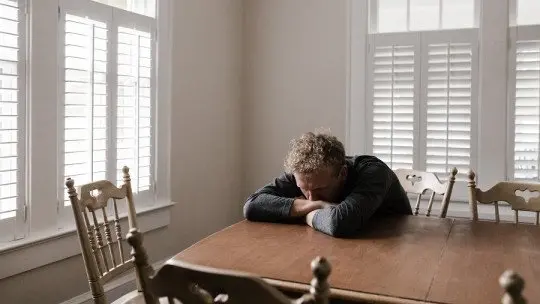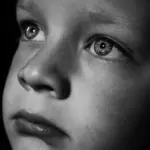
Science makes it increasingly clear to us that childhood is an essential period in people’s emotional development.
That’s why, It is not surprising that traumatic events experienced at this stage have a significant impact on mental health throughout life anxiety being one of the disorders that is most likely to arise as a result.
The link between childhood trauma and anxiety problems
Any event that causes a destabilizing effect on the child’s emotional development can affect the way he or she will later face the world and the way he or she will relate to others.
Besides, Anxiety arises as a natural response of the body to threatening situations. Its role is fundamental in human survival, since it helps us avoid or confront dangers that may arise.
The problem arises when this phenomenon becomes chronic or disproportionate to real situations.
Let’s look at why traumatic experiences in childhood contribute to the development of anxiety in adult life:
1. Overactivation of your nervous system
Firstly, when the child experienced difficult situations, there was an overactivation of his nervous system, provoking a fight, flight, or freeze response, more intensely in stressful situations. This will translate into greater sensitivity to stress in adult life.
2. Internalization of the problem
In second place, Children are “sponges” that absorb the behaviors of the adults around them. If adults in their environment expressed themselves through shouting or violent physical manifestations that generated tension, it is very likely that these emotional responses will be learned and repeated in adult life, increasing the chances of suffering from stress and anxiety.
3. Emotional problems
Thirdly, when there is childhood trauma, the child will have difficulties regulating and expressing their emotions, which will make it difficult for them to deal with stress in an optimal way. This is very likely to persist into adult life and lead to the development of anxiety disorders.
4. Snowball effect
Lastly, trauma can increase vulnerability to developing mental health problems closely related to anxiety.
An example
This is what happened to Lucía, who had her first anxiety attack in a crowded shopping center, one day before Christmas vacation in her first year of university.
Suddenly Lucia felt a growing feeling of nervousness. Her heart was beating rapidly. The noises began to seem louder; the brightest and blurriest lights. She felt tremendous difficulty breathing. Her legs were shaking and she couldn’t stop sweating.
His mind was filled with negative and catastrophic thoughts: he believed he was going to die of a massive heart attack.
He was finally able to get out of there and take refuge inside his car. Then, with great nervousness, he called his friend Antonio, who was a psychologist. He explained to her that she was suffering an anxiety attack and gave her some guidelines so that she could resolve it without having to go to a health center.
A few days later they met to talk. She told him that since she was a teenager, she had felt continuous oppression in her chest. She lived in “alert” mode, thinking that something bad could happen at any moment. But nothing was similar to that.
Advised by him, Lucía decided to attend therapy, where she discovered that she had witnessed physical and psychological abuse by her parents throughout her childhood and adolescence.
Her parents, after many years of disputes, decided to separate when she was ten years old. It was not what you would call a friendly separation, quite the opposite.
His adolescence was spent with a constant sense of fear and a sense of imminent danger in his daily life.
Her entire childhood history had a profound impact on her emotional development and her way of perceiving the world, which she saw as a hostile and dangerous place, even without already experiencing those conflictive situations that she remembered from her childhood. Therapy allowed him to further explore the relationship between his childhood fear and his current anxiety until it gradually disappeared.
In conclusion…
Today, there is solid scientific evidence to support that a traumatic childhood is related to an increased risk of developing anxiety disorders in adulthood.
For example, different organizations such as the APA (American Psychological Association) have compiled extensive research supporting that abuse, neglect, and exposure to traumatic events in childhood increase the likelihood of developing anxiety disorders throughout life. adult.
It is important to highlight that addressing anxiety related to childhood trauma requires trauma-focused therapy, which helps process and overcome traumatic experiences.
In order for anxiety to disappear once and for all, it is necessary to go to the root of the problem, because as the psychoanalyst CG Jung said: “We cannot change anything without first understanding.”








